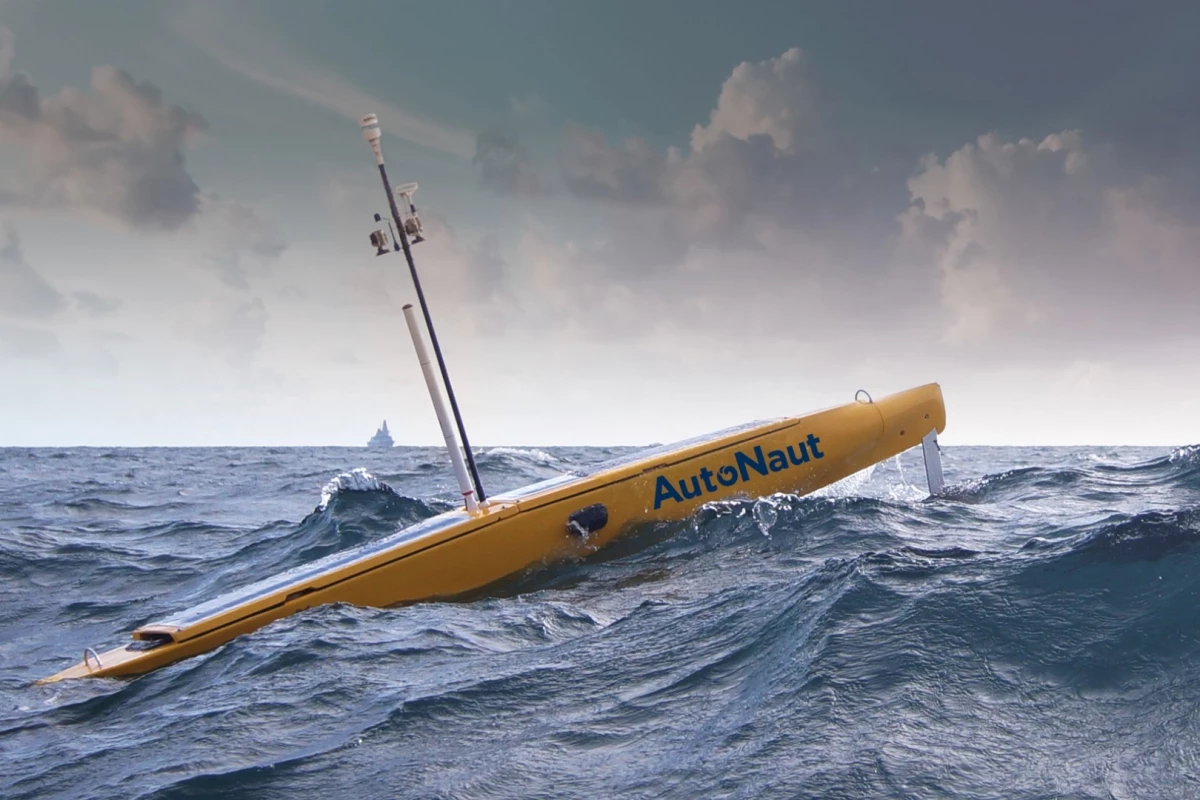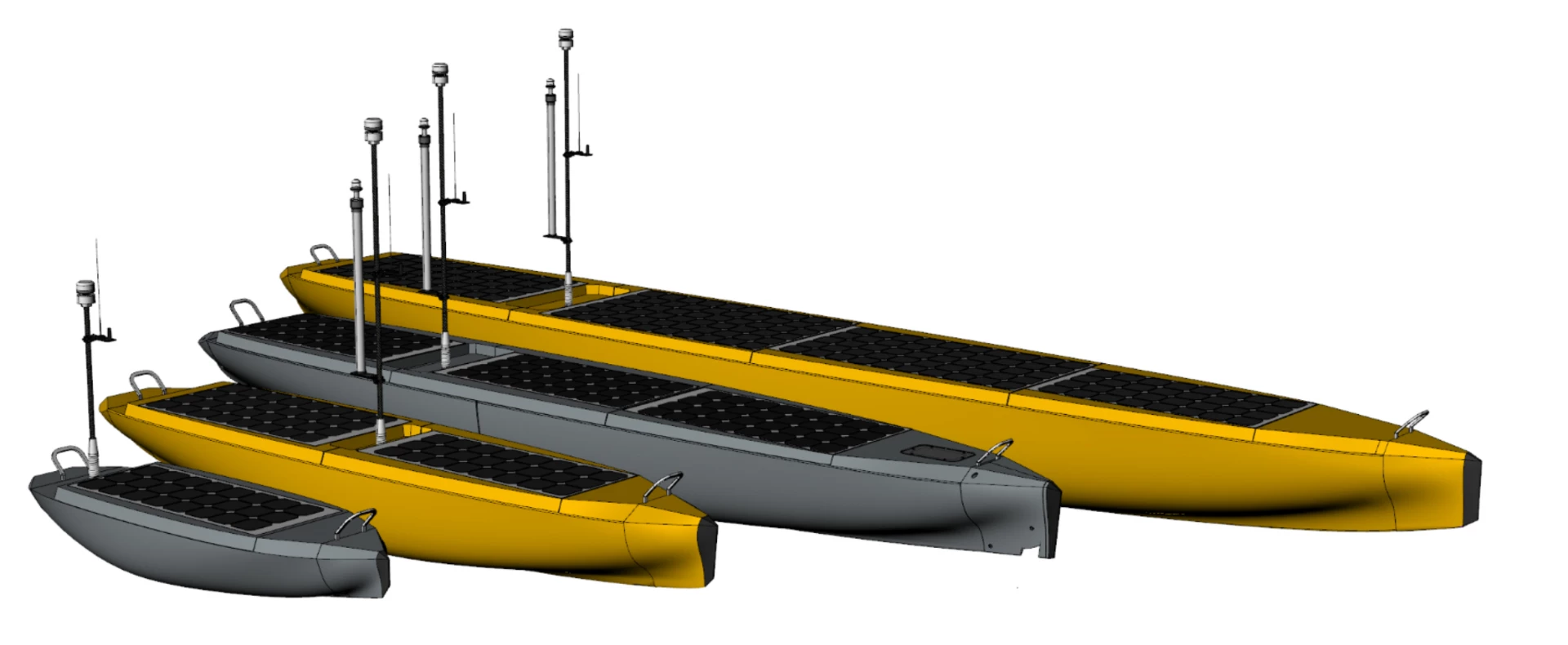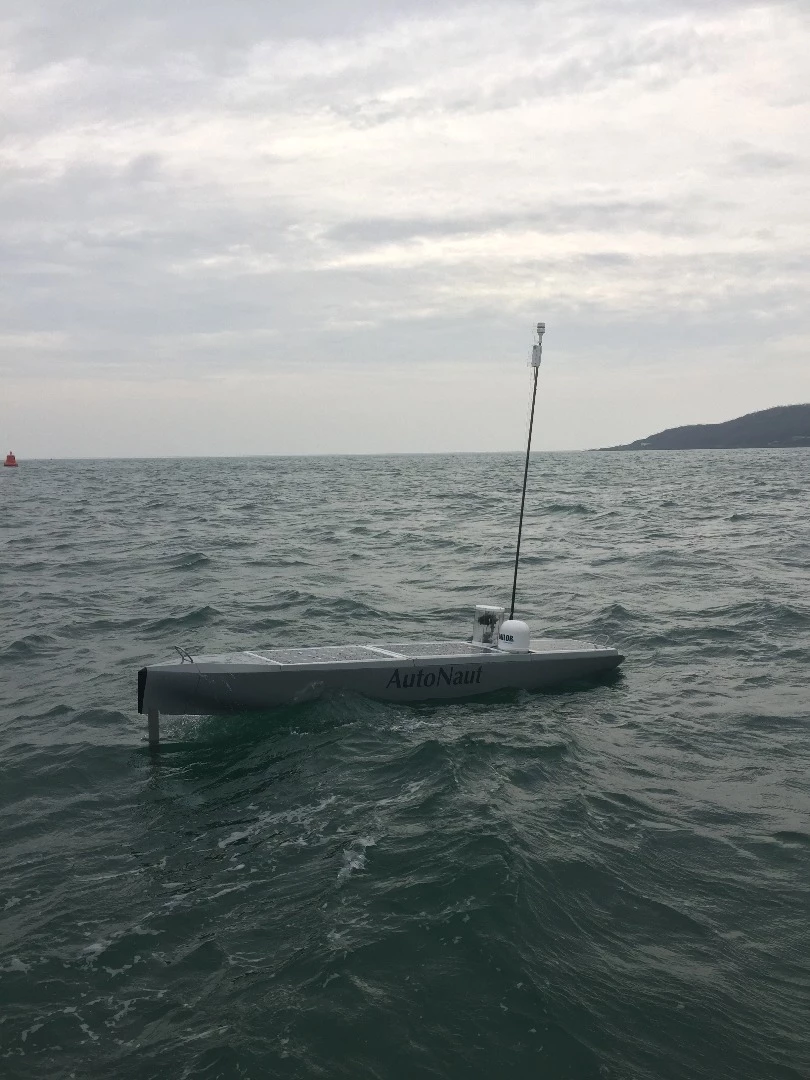We're seeing many examples of auto manufacturers aiming to remove the human element from the driving experience, but there are also moves to get robot boats on the water, too. Dutch researchers have been looking into using autonomous vessels for cargo and people transport, the US Navy has demonstrated harbor patrols using unmanned swarmboats and the first electric container ship is due to transition from manned to remotely-operated over the coming years. Meanwhile hobbyists have been busying themselves developing long-haul unmanned surface vehicles powered by the sun, such as the Solar Charger and SeaCharger. Most of the autonomous watercraft we've seen so far follow traditional hull and propulsion designs. The AutoNaut is a little different, packing solar-powered sensors for monitoring marine wildlife and ocean conditions and getting to where it needs to be using energy harvested from the waves it rides on.
The AutoNaut story began way back in 1981 when a skipper aboard a 30 meter schooner wondered if it was possible to make use of the waves to propel a craft, rather than fighting against them. Mike Poole bashed together a rough prototype from an old filing cabinet, toy cogs and a mustard tin and tested it on local river waters. The idea proved to have merit.
A (not so) quick trip to the UK's Patent Office revealed that he wasn't the only one to ponder powering small watercraft using waves, discovering a 23 foot craft called the Autonaut built around 1895 by Hermann Linden of Italy's Stazione Zoologica, among others.
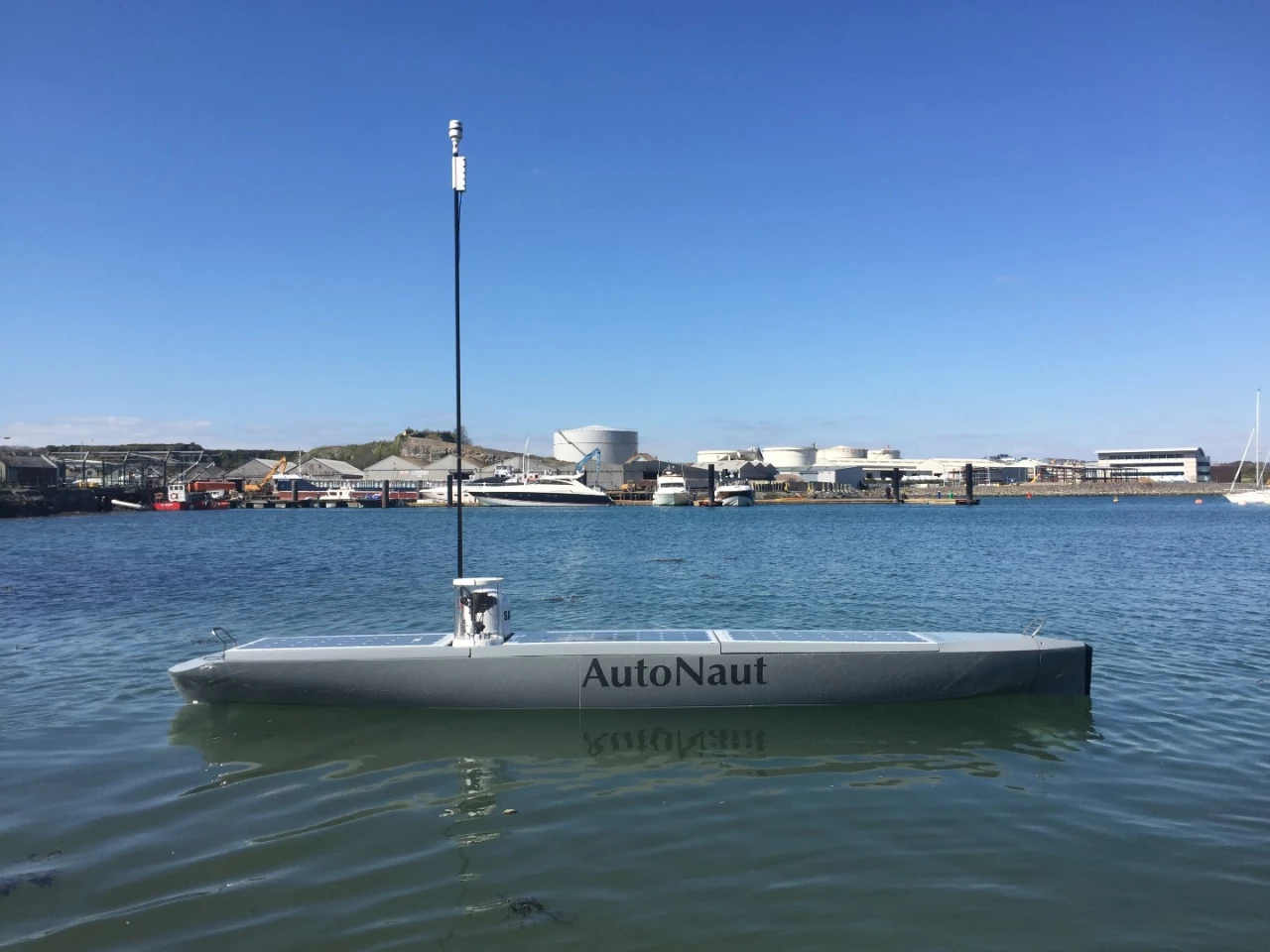
After banging heads with fellow builders and designers, Poole's project then went to sleep for 20 years before he decided to revisit the idea and add a new twist – design a hull specifically for the wave foil propulsion system instead of making use of traditional designs. Overall refinements and foil enhancements were subsequently patented, and Poole formed AutoNaut Ltd along with David Maclean in 2012 to commercialize the idea.
Most recently, the project has completed a 2 year stint at the European Space Agency's Business Incubation Centre at Harwell in the UK, refining the technology to improve navigation and control, and to remotely deliver (almost) real-time data. While there, the startup sent its autonomous, wave-powered boats on missions for NATO, the Royal Navy and the UK's Met Office.
Earlier this month, a new 5 meter (16.4 ft) sensor-packed unmanned surface vehicle was unveiled. The vessel can be launched and recovered directly from a shipway and moves forward using wave foil technology, comprising keel-mounted articulated and sprung foils to the front and back that harvest energy from the rise and fall of waves and silently convert it directly into propulsive thrust. The craft has been designed in such a way that it's able to move forward no matter the direction of the waves hitting it and can get up to 5 knots.
Photovoltaic panels to the top run client-specified sensors – current deployments include a mast-mounted weather station, a Doppler current profiler, multi-beam echo sounders and sonars and ocean acidification sensors. Measurements are collected and data processed onboard, with the information then transmitted to home base via satellite.
"If a satellite radar picks up suspected oil spills our AutoNaut can verify it on the spot, map the extent and take water measurements for relay back to shore," said the company's Phil Johnson. That same satellite link can also be used to control the USV, meaning mission profiles can be updated from anywhere in the world.
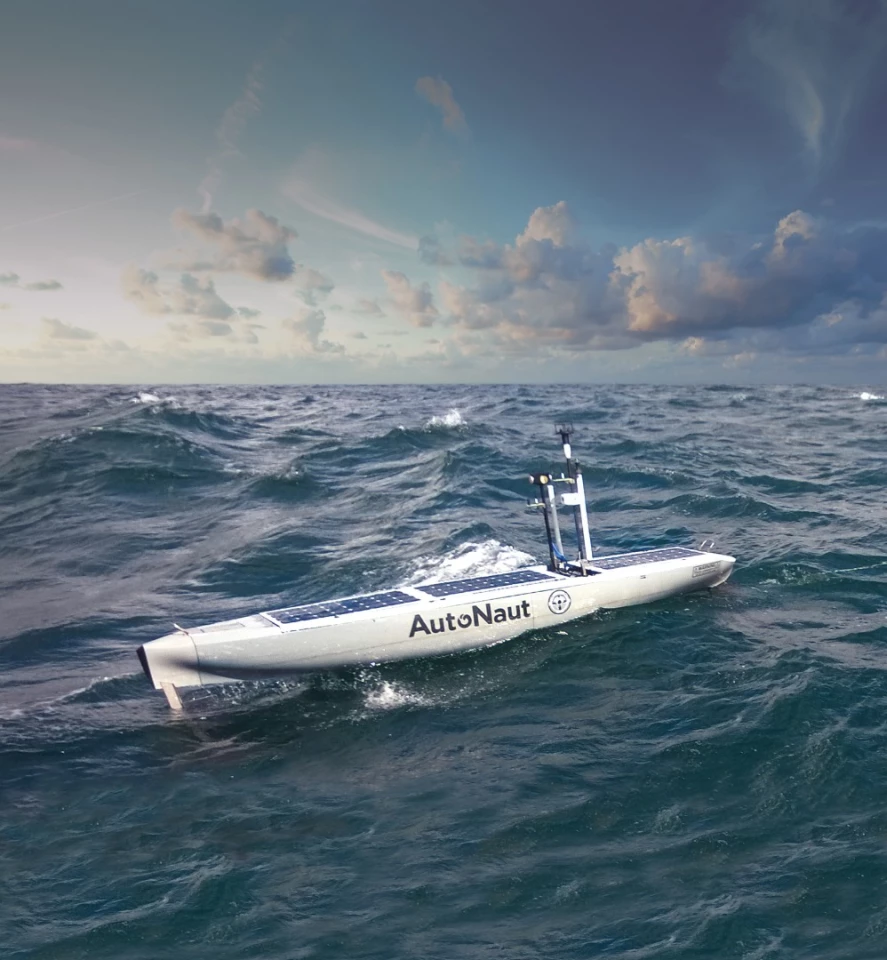
"AutoNaut is revolutionary and will help us to better understand our environment at a fraction of the cost of manned technologies," said company director David Maclean. The AutoNaut ocean rovers can be made in four sizes, ranging from 2 to 7 meters long, and the wave-powered craft with solar-powered sensors can also be built with auxiliary electric or hybrid drive, and a fuel cell can be fitted to power the sensor array.
The latest 5 meter AutoNaut will shortly be delivered to the Norwegian University of Science and Technology for research into autonomous systems and oceanographic studies. The video below shows an AutoNaut in action.
